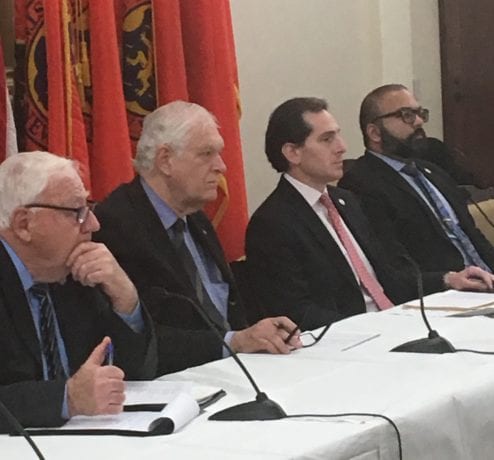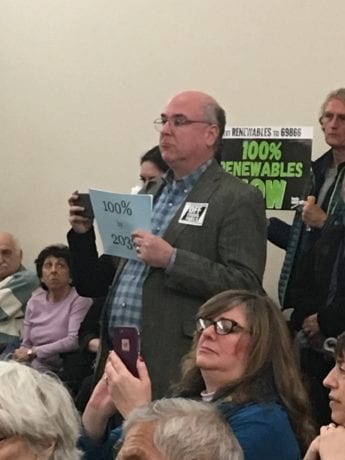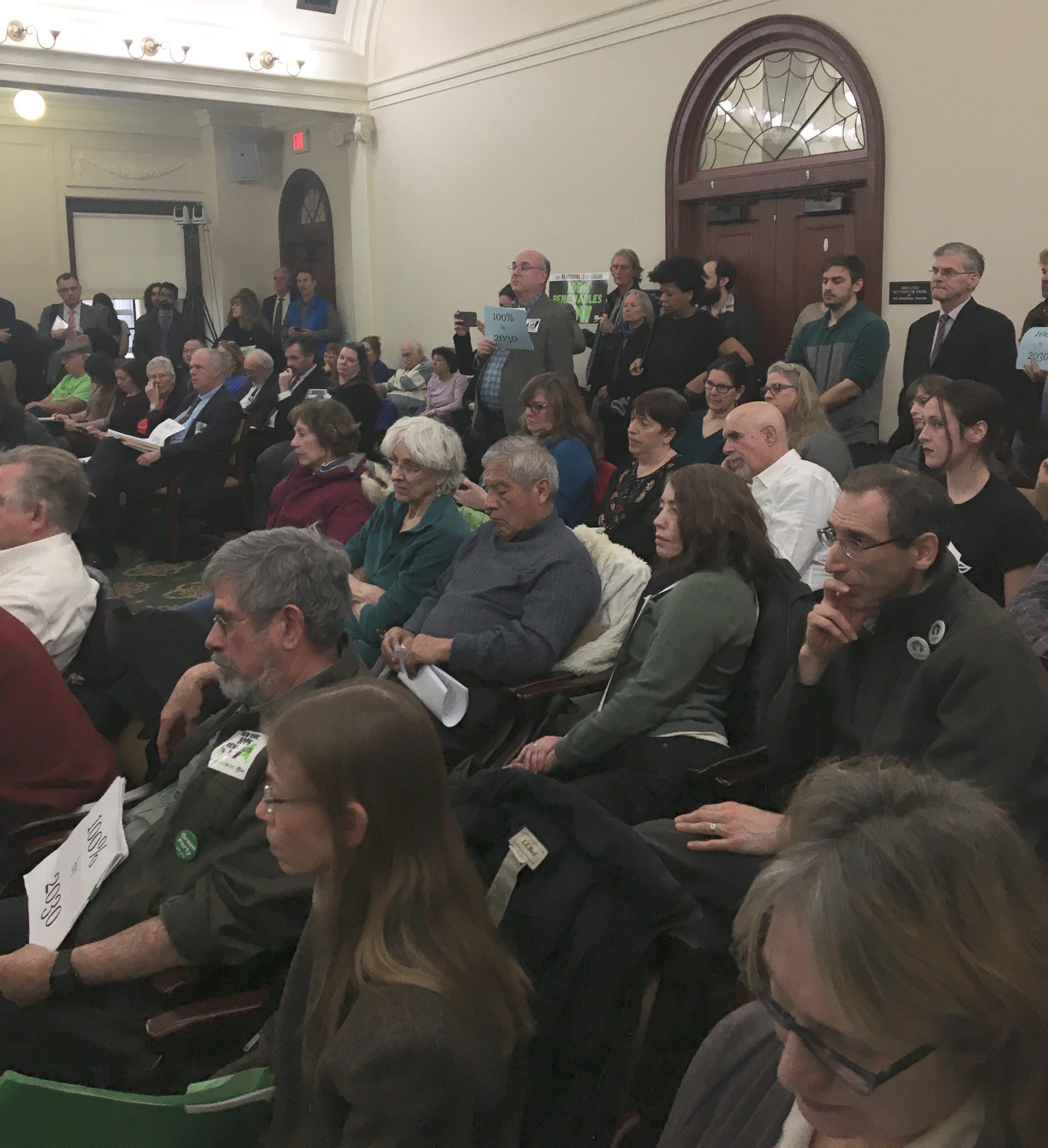Speakers and state senators alike talked about the importance of an efficient and comprehensive public transportation system for the future of Long Island at a crowded climate change hearing Friday in Mineola.
Suffolk County Deputy Executive and former North Hempstead Supervisor Jon Kaiman said that modernizing public transportation is crucial to cutting down Long Island’s greenhouse gas emissions generated by motorists.
Citizens Campaign for the Environment Executive Director Adrienne Esposito said the MTA, the parent of the Long Island Rail Road, “has a transit monopoly on the island, but has not been able to make it” a viable alternative for many commuters.
In 2014, New York was the ninth highest producer of carbon dioxide emissions nationally at 170 million metric tons, according to the EPA. A 2016 figure from the department attributed 28 percent of emissions to transportation.
Long Island’s bus and train systems are out of date and not marketed as a realistic choice of transportation for commuters who prefer their cars, according to Esposito.
Kaiman called for assistance from the state to incentivize the use of public transportation. The inadequate system that now exists, he said, results in hundreds of thousands of residents driving their own vehicles all over the island and increased greenhouse gas emissions.
Turning to the broader issue of climate change, Kaiman said the island has been subject to plenty of extreme weather events as a result of climate change like Superstorm Sandy, wildfires in the Pine Barrens and the hottest summers on record in recent years.
Kaiman also previously served as an adviser to Gov. Andrew Cuomo following the devastation that Superstorm Sandy delivered to Long Island’s shores.
“We no longer have the luxury of debating whether or not climate change is happening,” Kaiman said.

The three hearings, the first Feb. 12 in Albany and the second Feb. 14 in New York City, are a part of an effort to gauge public opinion on a proposed state bill dubbed the “Climate and Community Protection Act,” which aims to reduce greenhouse gas emissions and increase the use of renewable energy resources in the state.
“With inaction in Washington, it is critical for us to take the bold steps necessary to protect our planet,” state Sen. Todd Kaminsky (D-Long Beach), chairman of the Environmental Conservation Committee, said. “These hearings are a critical step to determining how New York can lead in the fight against climate change.”
The legislation would take measures to make the state carbon-neutral by 2050, including emissions from cars, public transportation, homes and office building heating.
A conference room on the second floor of the Nassau County Legislature was packed with scientists, local officials and advocates for renewable energy resources. Many who spoke commended the panel of senators and assembly representatives that hosted the hearing for taking climate change seriously.
“Thank you for hosting a hearing on climate change on Long Island,” Esposito said to rousing applause from the room.
The hearings and the proposed bill gives residents hope and faith for a better tomorrow in working collaboratively to face the greatest challenge of our generation, Esposito said.
The bill has been long supported by the state’s Democratic majority Assembly, but did not advance further in a Republican-controlled state senate. In November, Democrats seized control of both houses and since then the bill has gained traction.
The bill is not the only option, however.
In Cuomo’s State of the State address last month, he pledged to require 100 percent of the state’s electric generated from public utilities to come from renewable energy resources by 2040.
Cuomo’s pledge follows the state Public Service Commission’s Clean Energy Standard plan, which requires 50 percent of New York’s electricity to be produced from renewable energy sources like wind and solar by 2030 and will implement an aggressive phase-in schedule over the next several years, according to the governor’s website.
According to the Environmental Protection Agency, greenhouse gas emissions from the production of electricity accounted for 28 percent of total emissions in 2016 nationally.
Esposito said she believes that aspects of both plans can be merged.

Setting a date for total emissions to eventually reach zero is prudent and important, according to Esposito. Other issues, she added, include educating the public on the benefits of action and dispelling myths regarding renewable energy resources, as well as devising an effective plan for public transportation on the island.
Climate change is very real and will make transitioning to renewable energy difficult, according to Paul Shepson, dean of the School of Marine and Atmospheric Sciences at Stony Brook University.
“It is a real threat to our society, our infrastructure and to the natural world and addressing this problem is one of the great challenges of the 21st century,” Shepson said.
Asked by Kaminsky how serious an issue climate change is on a scale of one to 10, Shepson replied 10 and called it an “insidious, slow” problem. Moving toward renewable energy will be a decades-long, future investment, but will create new “green” jobs, he said.
“It will require investment, political will, hard work, determination and innovation,” Shepson said.



